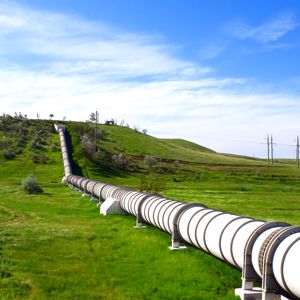Gas Pipe Corrosion Protection: Do You Know What It Takes?
Whether it’s used to fuel various processes, appliances and modes of transportation, gasoline is a major source of the United States’ energy consumption. In 2020, over 123 billion gallons were used across the country, translating to an average of 337 million gallons per day, according to the U.S. Energy Information Administration.
The safest, most effective way to transport this critical fuel is through gas pipe infrastructure, but over time, as a result of wear and tear and other contributing factors, gas pipes break down, increasing the risk of leakages. Not only does this potentiality enhance the risk of supply problems, it can lead to severe environmental hazards and soil degradation.
However, with gas pipe corrosion protection solutions in place, leakages, profit losses and supply chain problems can be forestalled.
How big of an issue is gas pipe corrosion?
Thanks to advancements in technology and highly effective pipeline coating material, more controls are in place to minimize breakdowns. But they remain an ongoing concern. According to the Pipeline and Hazardous Materials Safety Administration, there were 578 reported events in 2020, costing producers more than $335 million in losses. Since 2001, the 20-year average has been approximately 625 incidents annually.
“Nearly 20% of pipeline failures between 1998 and 2017 stemmed from corrosion.”
There are a variety of causes for these events — including human error — and pipeline corrosion is among the leaders, based on the most recent figures available from S&P Market Intelligence. And as the Pipeline & Hazardous Materials Administration found, nearly 20% of pipeline failures between 1998 and 2017 stemmed from corrosion.
Cathodic protection, and the use of anode materials, is one of the ways utility companies lengthen the lifespan of their pipelines so pipeline corrosion is more manageable.
What is cathodic protection and how does cathodic protection work in a gas pipe?
The gold standard of gas pipe maintenance, cathodic protection serves as a corrosion inhibitor. It does this by converting all of the active sites on a metal’s surface — more formally known as the anode — to passive sites, or cathodes. The conversion is done by supplying an electric current from an alternative source. Zinc, which is a more reactive metal, serves as the sacrificial coating and is ultimately what protects steel pipes. The payoff is a minimized corrosion rate. Some of the most common anode materials used for this process are aluminum, copper, magnesium and titanium.
While no corrosion protection method is perfect, this approach is highly effective. Indeed, S&P Global Intelligence examined 10 energy companies with the highest and lowest leak ratios, those with the lowest rates of unprotected steel and iron pipelines were most successful on this front.
What are the regulatory requirements for cathodic protection of a pipeline?
The energy industry is highly regulated, given the environmental ramifications that can result from poor management, drilling or transportation practices.
There are also compliance measures associated with cathodic protection. These include:
- All gas pipelines installed after July 31, 1971 must have cathodic protection and be coated. The same rule applies for liquid interstate pipelines installed after March 31, 1970.
- Cathodic protections systems must be monitored and tested no less than once every year.
- Rectifiers, the devices that direct the electric currents into underground pipelines, must be examined six times per year. Each check must occur within two-and-a-half months of the immediately previous or subsequent inspection.
- Gas pipeline operators must maintain a paper trail of their corrosion protection systems. These records include inspections, surveys, tests and the date that they occurred.
- If cathodic protection systems are found to be substandard, the appropriate fixes should be installed “in a timely fashion.” This means no longer than 18 months from the date the issue(s) came to light.
What is the best way to transport natural gas?
While gasoline pipelines are typically made from traditional steel, which is an alloy of iron, natural gas pipelines are mostly composed of carbon steel. As its name intimates, carbon steel has a higher amount of carbon than traditional steel and it also has a lower amount of chromium, generally 10.5% or less. Given the temperature requirements of transporting liquified natural gas, carbon steel allows for better heat distribution, which helps to transport liquified natural gas more efficiently.
While these pipelines may transport different derivatives of gasoline, cathodic protection serves the maintenance and longevity needs of both, and in so doing, slows the effects of pipeline corrosion.
Auto Technology has the environmental testing equipment, coating materials and corrosion products that can help your company improve compliance and maximize your business interests, regardless of your industry. Contact us today to learn more.


